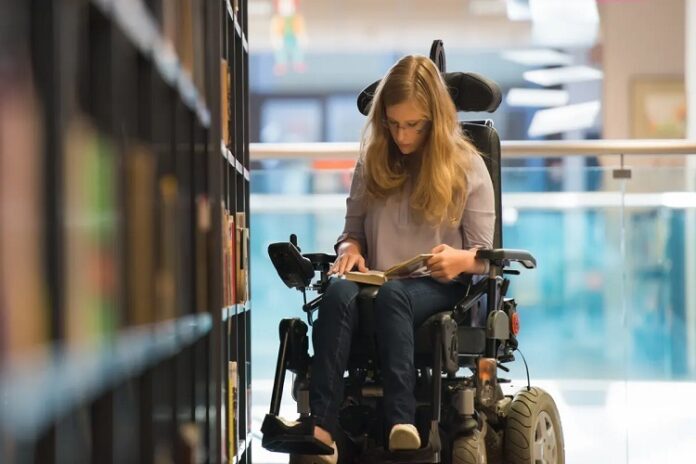Claiming disability benefits can be an essential lifeline for individuals with disabilities, as these benefits provide financial support to help manage care and mobility needs. Different countries and programs have specific eligibility criteria and application processes to ensure that the support reaches those who need it the most. Understanding the basics of claiming disability benefits is the first step in accessing this vital assistance.
In many cases, disability benefits are tax-free, and the amount received depends on the extent of the individual’s care and mobility requirements. Programs such as the Disability Living Allowance (DLA) for adults in the UK or the Disability Allowance in Ireland offer various levels of support. To claim these benefits, applicants must meet eligibility criteria and provide the necessary documentation, which may include medical records and other relevant information.
The claiming process can be complex, but resources and organizations are available to guide applicants through the steps. Whether it’s the first time claiming disability benefits or transitioning between programs, knowing the basics will help navigate the system and ensure appropriate support is received.
Table of Contents
Understanding Disability
Definition of Disability
The legal definition of disability differs from country to country, but in general, it refers to physical or mental impairments that substantially limit someone’s ability to perform daily activities. Many governments describe what they consider a disability and how these conditions must be documented on applications. For example, some countries define disabilities as sensory (e.g., vision, hearing), physical (e.g., mobility, dexterity), psychological (e.g., depression, anxiety) or intellectual impairments (e.g., learning disability). It is essential to check the specific criteria for each country and program when applying for disability benefits.
Types of Disabilities
Disabilities can be classified into different categories based on the nature of the impairment. Some common types include:
- Physical disabilities, such as paralysis or limb amputations, affect a person’s mobility or dexterity.
- Sensory disabilities, such as blindness or deafness, affect a person’s ability to process sensory information.
- Developmental disabilities, such as autism or Down syndrome, impact a person’s cognitive, emotional, or social development.
- Mental health conditions, such as depression or anxiety, can impair a person’s emotional well-being and ability to function daily.
Causes and Prevalence
Disabilities can have various causes, such as genetic factors, accidents or injuries, exposure to environmental toxins, or infections. The prevalence of disabilities can vary depending on age, geography, and healthcare quality.
According to the Social Security Administration, disability benefits are available through two primary programs: Social Security Disability Insurance (SSDI) and Supplemental Security Income (SSI). SSDI benefits disabled or blind adults who have paid into the Social Security system. At the same time, SSI is a needs-based program for people with limited income and resources who are disabled, blind, or aged 65 or older.
Claiming Disability
Claiming disability benefits can provide essential financial support to those unable to work due to a physical or mental impairment. In this section, we will discuss the eligibility criteria, application process, and the required documents for claiming disability benefits.
Eligibility Criteria
Eligibility criteria for disability benefits vary depending on the specific program or institution. However, some general criteria include:
- Having a medically determinable physical or mental impairment
- Impairment must be expected to last at least 12 months or result in death
- Being unable to engage in substantial gainful activity
It is important to consult the relevant institution or program for specific eligibility requirements.
Application Process
The application process for disability benefits typically involves the following steps:
- Review eligibility criteria and gather necessary information
- Complete and submit the application form either online or by mail
- Provide medical evidence to support the disability claim
- Await a decision on eligibility and benefit amount
For Social Security Disability benefits, you can start your application process by visiting the Social Security Administration’s website. For veterans, the application can be made through the Veterans Affairs (https://www.va.gov/disability/how-to-file-claim/).
Required Documents
To claim disability benefits, various documents will need to be provided. These may include:
- Proof of identity, such as a birth certificate, passport, or driver’s license
- Medical records and supporting evidence from healthcare providers
- Employment history and income information
- For veterans, military discharge papers (DD214) and service-related medical records
Consult the specific institution or program for a complete list of required documents and ensure they are submitted along with the application to avoid delays in processing.
Section 4: Disability Benefits
Disability benefits are designed to provide financial support, healthcare coverage, housing assistance, and transportation services for people who cannot work due to a disability. The specific benefits and eligibility criteria can vary depending on the country and the individual’s circumstances.
Financial Assistance
Financial assistance is available through government programs and nongovernmental organizations through disability payments, grants, loans, and other aid. These benefits can provide a vital income source for people who cannot work due to a disability.
Healthcare Coverage
Healthcare coverage is an essential component of disability benefits. Most programs provide access to medical insurance plans and other health services, such as physical therapy and mental health counseling. This helps ensure that individuals with disabilities receive the necessary care to manage their condition and maintain a good quality of life. Healthcare coverage may include prescription drug coverage, home health services, and long-term care.
Housing
Accessible and affordable housing is essential for individuals with disabilities. Disability benefits may cover housing costs, such as rent or mortgage payments and utility bills. Some programs also assist with home modifications, such as installing wheelchair ramps and grab bars.
Transportation
Having access to reliable transportation is essential for the disabled. Disability benefits can help cover the cost of specialized vehicles, public transportation expenses, and other transportation-related costs.
Rights and Advocacy
Legal Protections
Persons with disabilities have legal protections to ensure they receive equal treatment and access to services and are not discriminated against. These protections are established through various legislation, such as the Americans with Disabilities Act (ADA) in the United States.
The ADA, for instance, sets guidelines for employers, public services, and accommodations to ensure they are accessible for everyone. Additionally, the ADA prohibits discrimination against individuals with disabilities in all areas of public life, including employment, housing, education, and public transportation.
Disability Rights Movements
The disability rights movement is a broad social and political effort to ensure that individuals with disabilities have the same rights and opportunities as those without disabilities. This includes promoting access to services, advocating for more inclusive policies, and raising awareness of the challenges faced by persons with disabilities.
The ultimate goal of the disability rights movement is to ensure that the disabled are treated with dignity and respect, regardless of their circumstances. It is important to note that not all persons with disabilities support the disability rights movement. They may have different opinions on specific topics or feel that the movement does not accurately represent their experience.
Ultimately, it is up to each individual to decide whether or not they wish to support the disability rights movement and what form that support takes. However, it is essential to remember that everyone deserves to have their voices heard and be treated with respect, regardless of their abilities.
Resources for Support
Numerous resources are available to support individuals with disabilities in their pursuit of claiming their rights and ensuring their needs are met. Some resources include:
- Advocacy services that empower individuals with disabilities and assist in decision-making processes
- Protection and Advocacy Systems (P&As) that work at the state level to empower and advocate for disabled individuals
- Grantmaking organizations, like the Disability Rights Fund, provide financial support to disability rights movements and organizations
- Education and advocacy services that help combat discrimination and abuse against persons with disabilities
These resources, alongside various disability rights movements and legal protections, work to ensure that persons with disabilities can claim their rights and live to fulfill inclusive lives.
Challenges and Solutions
Stigma and Misconceptions
One of the significant challenges faced by individuals with disabilities when claiming benefits is the stigma and misconceptions surrounding disability. This can lead to discrimination, lack of understanding, and difficulty navigating the system. To address this issue:
- Public awareness campaigns can help educate the general population about the various types of disabilities and the importance of equal opportunities for all.
- The SSA and other organizations can provide resources to better inform people about claiming disability benefits and dispel common myths.
Accessibility and Inclusion
Accessibility challenges persist for those with disabilities, impacting their ability to claim benefits, access services, and participate in society. To improve accessibility and inclusion:
- Government agencies can review and evaluate their current systems and processes to identify areas for improvement in accessibility.
- Technological advancements, such as accessible websites and applications, can be further developed and implemented to make it easier for people who have disabilities to claim benefits and access services.
- Organizations can prioritize inclusive design principles, ensuring all their materials and resources are accessible to those with disabilities.
Employment Opportunities
The disabled often face barriers to employment, which can hinder their financial stability and independence. To promote employment opportunities for individuals with disabilities:
- Employers can be encouraged to implement inclusive hiring policies and ensure their work environments are accessible to employees with disabilities.
- Vocational rehabilitation programs can be expanded to provide tailored support and resources for individuals with disabilities seeking employment.
- The SSA and other agencies can work collaboratively with employers to promote the benefits of hiring the disabled and help create a more diverse and inclusive workforce.
Conclusion
In claiming disability, understanding the diverse experiences and needs of individuals with disabilities is crucial. As noted by Cambridge University, disability can have positive and negative effects on the ability and desire to participate in various aspects of life, including politics.
Access to quality programs and services is vital for children with disabilities, as stated by the National Academies Press. These programs should be tailored to meet individuals’ needs and support their social development and integration. Furthermore, individuals with disabilities should be recognized and considered in larger policies and decision-making processes, such as the case of refugees with disabilities highlighted by the UNHCR
As we advance, we must continue working toward a more inclusive society where individuals with disabilities can claim their rights, access necessary services, and participate fully. This can be achieved through continued research, discussion, and understanding of diverse disability experiences and perspectives.




